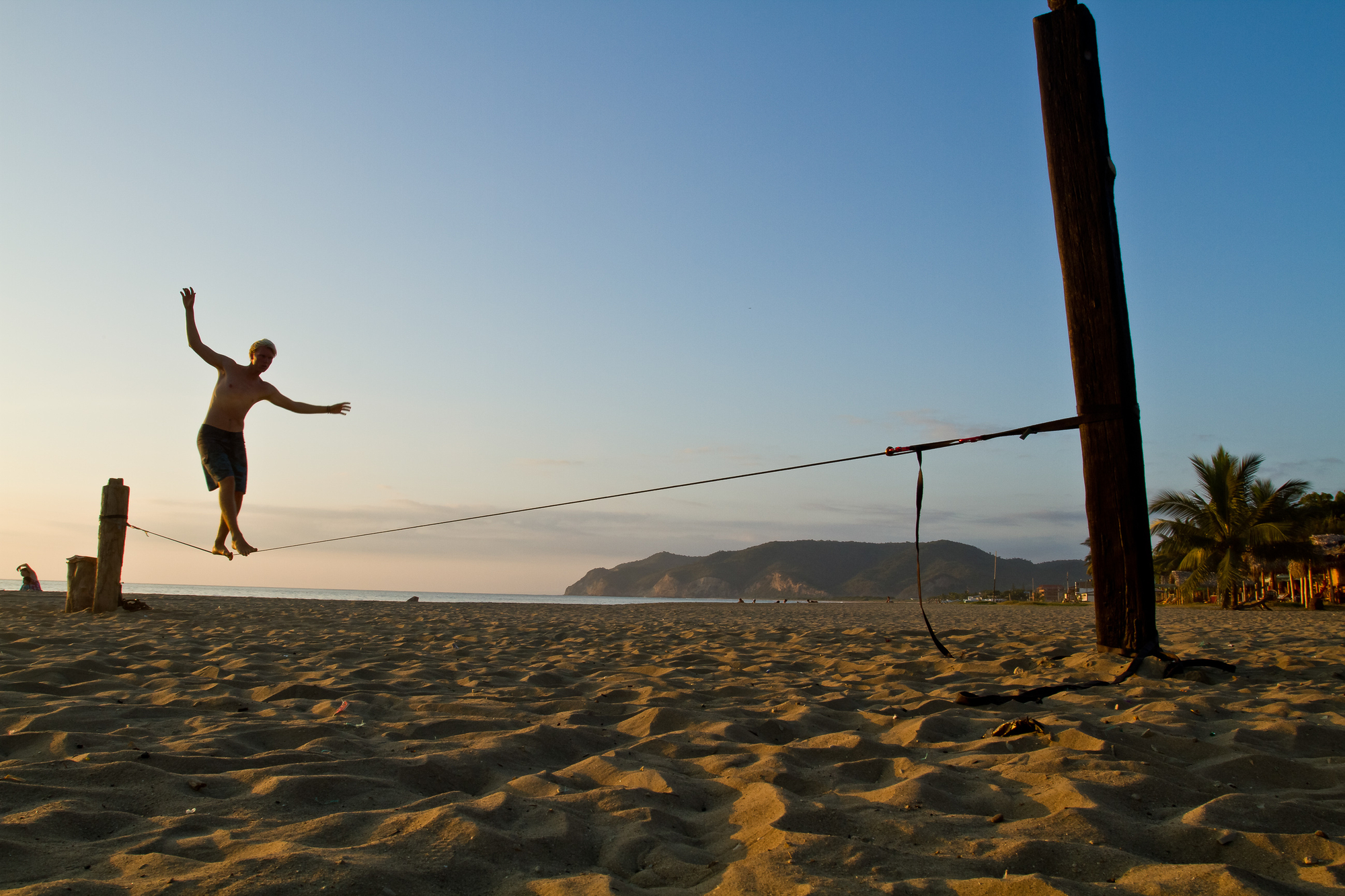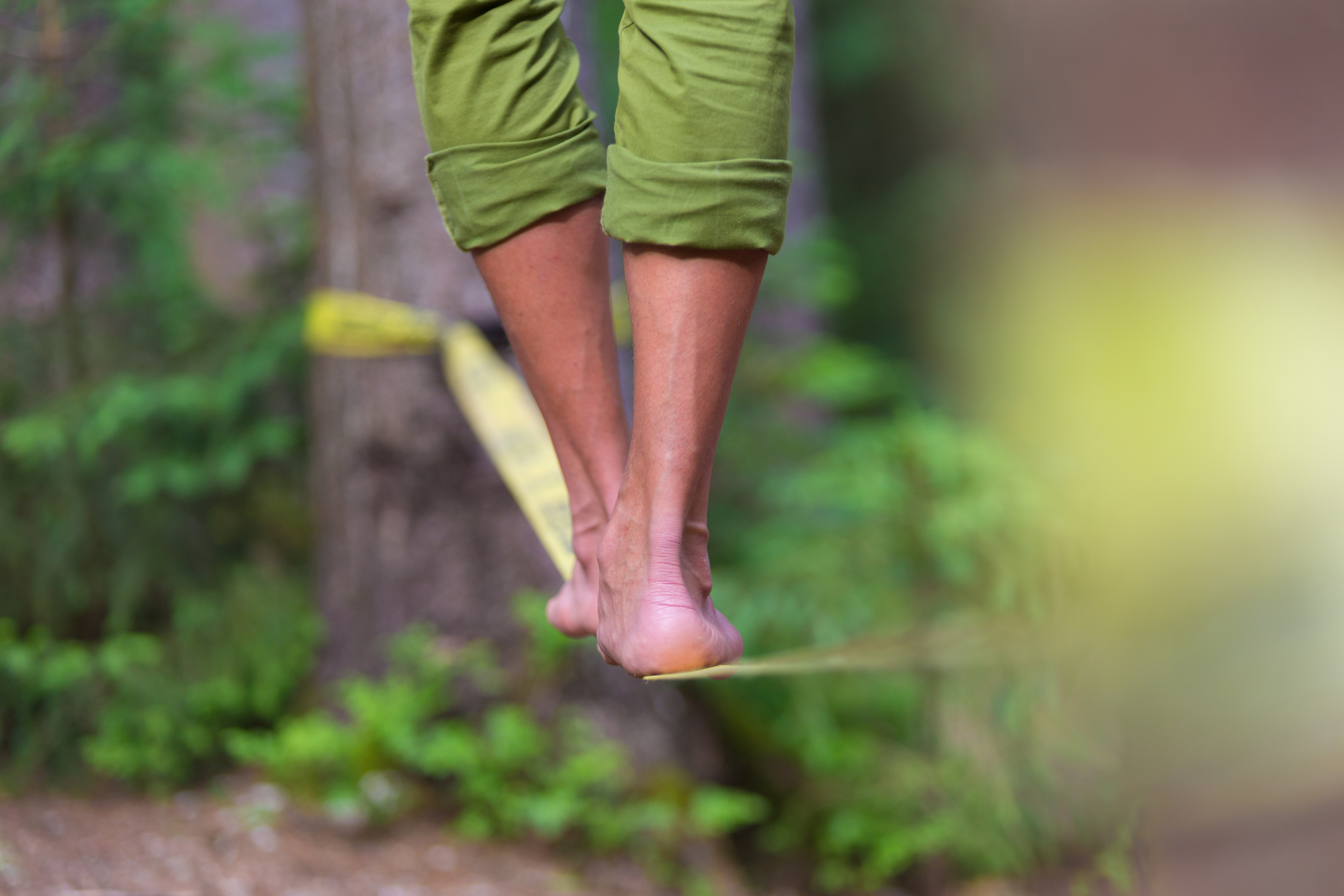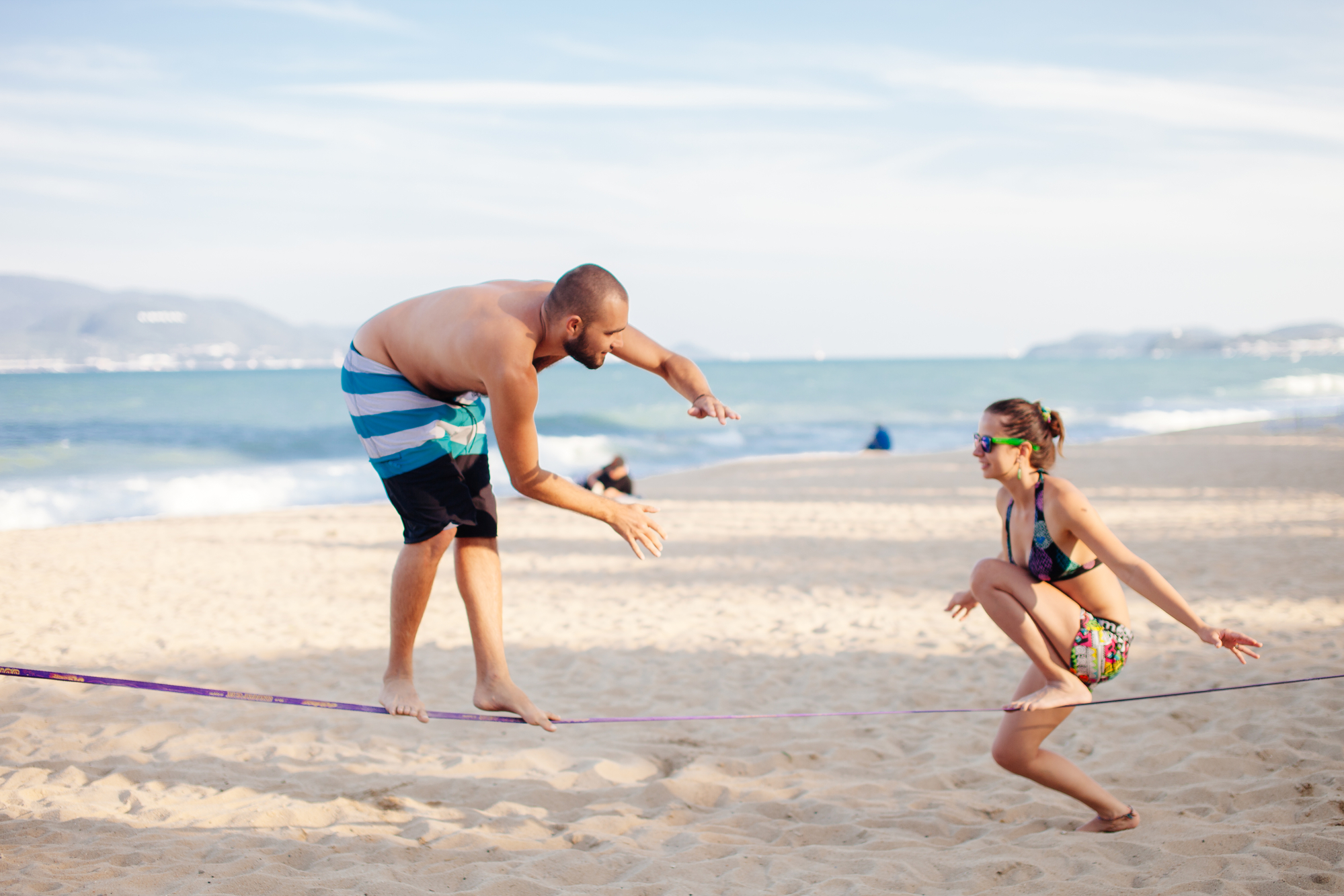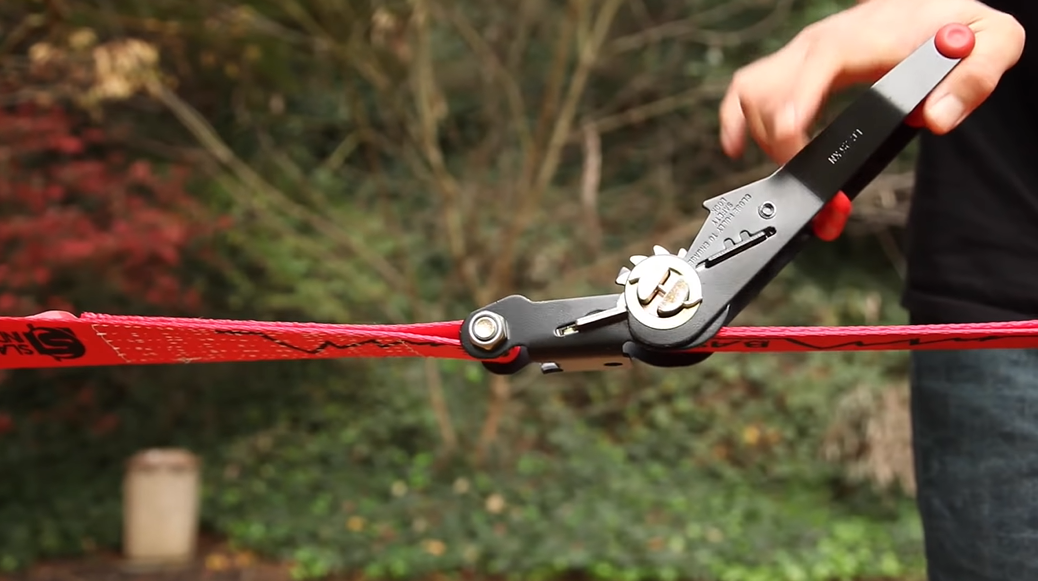It’s no surprise that slacklining is a highly popular sport. There is something satisfying about crossing a narrow line with only your balance, confidence, and wits as your tools. Add in a dash of danger if you go highlining, and it is truly a sport for the daring!
Choosing the right slackline webbing is essential in making your experience fun, enjoyable, and safe.
You will base your decision on several factors: your skill level, budget, slacklining goals, and personal preference.
Slackline webbing is made from synthetic materials. The two common materials used for webbing are nylon and polyester.
Aside from the material, you also need to consider the weaving pattern of the webbing.
Let’s break down how webbing material and weaving patterns affect your slacklining experience.
Nylon vs. Polyester: Which is Better For You?
Nylon slacklines are elastic, durable, and springy. The stretchiness of nylon allows slackliners to bounce and jump along the line.
This is why nylon webbing is popular with trickliners and waterliners.
Polyester slacklines do not have as much give compared to nylon slacklines.
The material is heavier and more rigid than nylon, making it more challenging to master.
Longliners prefer polyester slacklines since these do not sag significantly in the middle even over long distances.
How Webbing Material is Rated
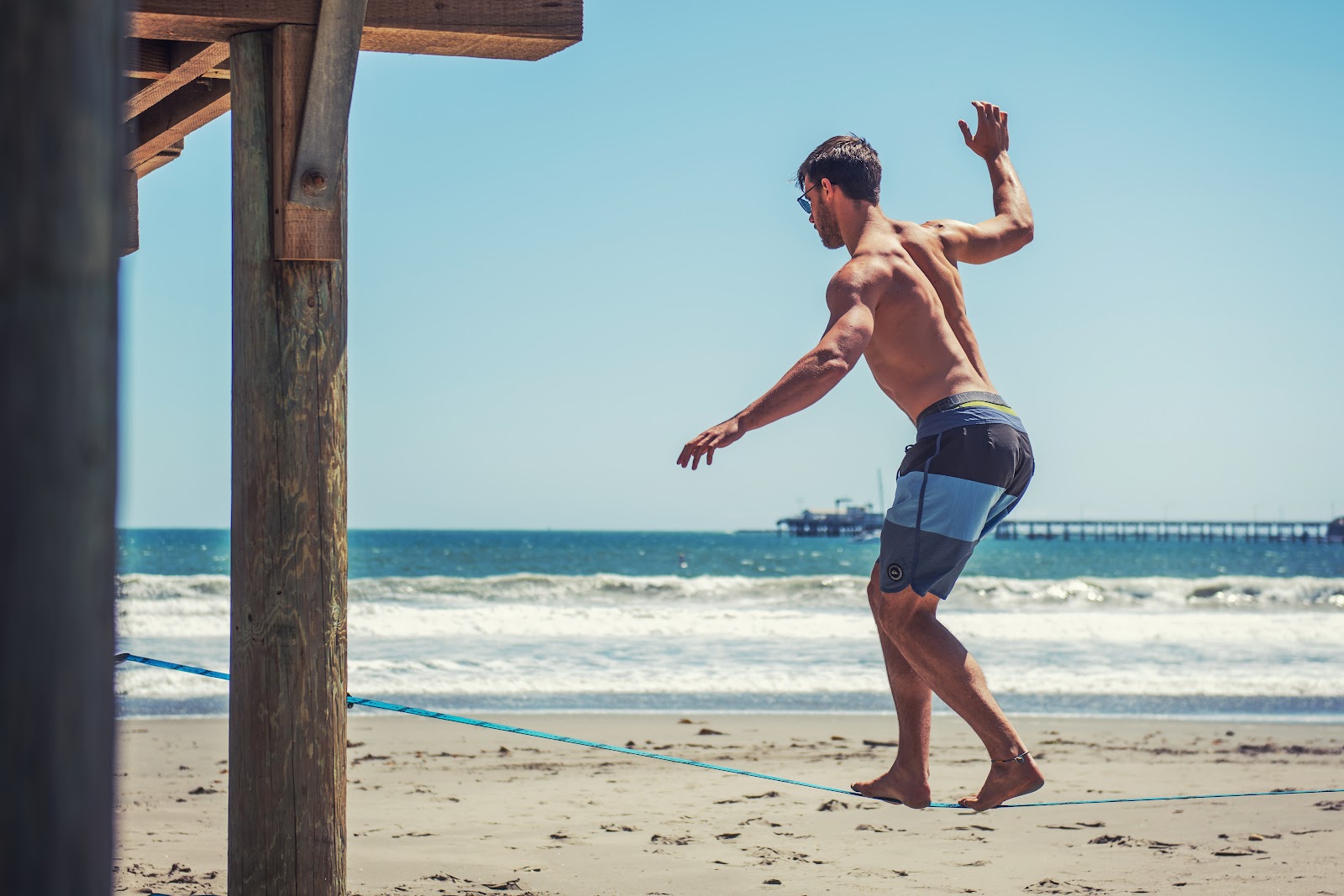
A slackline webbing material’s rating will give you a better idea of its tensile strength, durability, and stretchiness. Here are the five factors that affect a webbing’s rating:
Breaking strength
Breaking strength refers to the weight that webbing can support before it snaps. The higher the breaking strength, the safer a slackline.
The breaking strength rating should be at least three times higher than a webbing’s maximum tension threshold.
If your webbing’s maximum tension is 2,000 lbs, the breaking strength should be at least 6,000 lbs.
Stretch
Stretch or elongation is critical depending on the type of slacklining you wish to do. For longliners and highliners, a stable slackline with minimal elongation is preferable for maximum stability.
On the other hand, trickliners need a slackline with a high amount of stretchiness to give more momentum for jumping along the line.
Weight
Webbing weight will determine how difficult it is to move along the slackline. Lightweight webbing is easier to use compared to heavyweight webbing.
This is because there is less momentum produced as you shift your weight above the slackline.
However, heavyweight webbing can also be beneficial if you want to learn how to better balance while on slacklines.
Thickness
The thickness of the webbing affects two things. First, how easy it is to lock the slackline. Thin webbing is easier to knot compared to thick webbing.
Second, how difficult it is to move above the line.
Most commercial slacklines are around 2” in circumference, but for those looking for a challenge, there are 1” webbings.
Texture
Texture refers to the feel of the webbing against your feet.
Slacklines with a tight weaving pattern and thin material fibers have a softer texture compared to those with a loose weaving pattern and thick fibers.
The texture is important for your comfort and comes down to personal preference.
Why is Weaving Pattern Important?

Slacklining is all about balance. Choosing your weaving pattern is highly essential in keeping that perfect equilibrium in check, which means better performance and more enjoyment from your experience!
There are three types of weaving patterns to choose from, each with its own pros and cons.
You can choose the weaving pattern depending on the type of slacklining you want to do.
Flat
Slacklines with a flat weaving pattern tend to be lightweight, stretchy, and easy to rig. They’re great for beginners since the flat surface gives more traction to the bottom of the foot.
Flat slacklines are also suitable for trickliners because it is easy to catch your feet on the surface.
Tubular
Tubular slacklines look similar to a hose. They are generally heavier because of the multiple layers of webbing but have more elongation compared to flat slacklines.
Tubular slacklines are ideal for barefoot slacklining because of their soft texture.
However, these slacklines are not suitable for tricklining because the rounded surface can be slippery.
Threaded
Threaded slacklines have many webbing layers and can be composed of different materials. This is the strongest and most durable weave for slacklines.
Threaded slacklines are ideal for longlining and highlining because they can be used for long distances.
Conclusion
Ultimately, choosing the best slackline for you comes down to what type of slacklining you want to perform and your skill level.
For novices, a nylon slackline with a flat weave would be the easiest type of slackline for learning the basics.
For highliners, on the other hand, a threaded slackline is the safest option.
As your skill level and confidence increase, you can start experimenting with other types of slacklines.
If you are used to a nylon slackline, you can switch to a polyester slackline to improve your balance and coordination.
You can also increase the length of your slackline for a greater challenge.
Now that you know how to choose slackline webbing, have fun slacklining!


